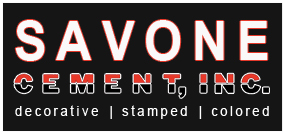Frequently Asked Questions
Are you licensed and insured?
We are licensed and insured and registered in every city we work in.
How long have you been in business?
Over 25 years.
Do you pull the permits or do I have to?
We pull all the permits for all jobs we do.
How thick is a residential driveway?
4 inches thick.
What bag of mix do you use for residential work?
6 Bag mix.
How is the clean-up after a job is finished?
We take pride in making your outside look the same as when we came in. We do a complete clean-up by backfilling and sweeping to ensure the job looks clean and professional.
Does cement need to be sealed?
Yes, it is recommended with the harsh conditions of Michigan weather.
Does your company offer sealing of the concrete?
Yes, we do offer as an added cost to the job.
Can we throw salt or any deicers they sell in the stores on our new concrete?
No, defiantly not recommended. Salt or any deicers and cause pitting in the concrete.
Is stamped concrete a good alternative to decks and brick pavers?
Yes, because of two things, cost and maintenance. Decks generally need very much maintenance and care. This causes time and money. Brick pavers have a habit of rising and falling with our Michigan frost cycle. These pavers also leave room for grass and weeds to grow in over time. A stamped patio is the way to go to ensure quality, time and cost.
How long do we have to wait to use our new concrete patio or driveway?
Depending on the job and weather, new concrete can usually take car traffic after 7 days and walking on it after 24 hours. We will make our recommendation once a job is complete.
Why do concrete surfaces flake and spall?
Concrete surfaces can flake or spall for one or more of the following reasons:
- In areas of the country that are subjected to freezing and thawing the concrete should be air-entrained to resist flaking and scaling of the surface. If air-entrained concrete is not used, there will be subsequent damage to the surface.
- The water/cement ratio should be as low as possible to improve durability of the surface. Too much water in the mix will produce a weaker, less durable concrete that will contribute to early flaking and spalling of the surface.
- The finishing operations should not begin until the water sheen on the surface is gone and excess bleed water on the surface has had a chance to evaporate. If this excess water is worked into the concrete because the finishing operations are begun too soon, the concrete on the surface will have too high a water content and will be weaker and less durable.
What are the decorative finishes that can be applied to concrete surfaces?
Color may be added to concrete by adding pigments-before or after concrete is place-and using white cement rather than conventional gray cement, by using chemical stains, or by exposing colorful aggregates at the surface. Textured finishes can vary from a smooth polish to the roughness of gravel. Geometric patterns can be scored, stamped, rolled, or inlaid into the concrete to resemble stone, brick or tile paving. Other interesting patterns are obtained by using divider strips (commonly redwood) to form panels of various sizes and shapes rectangular, square, and circular or diamond. Special techniques are available to make concrete slip-resistant and sparkling.




